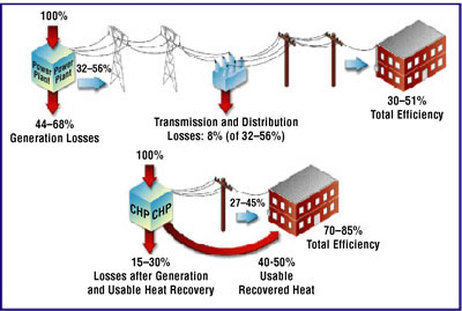|
What does the future hold? Well, if you have the right education, it could mean an exciting new, futuristic career. These 20 jobs are worlds from ordinary and may surprise you. Check out some of the top careers of the future, learn more about new and exciting jobs on the horizon, and learn how you can train to be a pioneer in a futuristic field.
Jobs may be scarce today, but if current trends hold, pretty soon there will be plenty of fun, lucrative gigs. If you have the vision to start prepping now, you could be flying starships, reading minds for DARPA, or manning a fusion or free energy reactor. The jobs are coming. Feel free to thank us over lunch at the hotel you built- on Mars.

Job: Build cosmic outposts. Hiring: 2025 Trend: President Obama says that astronauts will reach an asteroid by 2025. Soon we’ll be mining precious metals and making rest-stops to Mars, projects that require buildings and vehicles that can withstand everything from subzero temperatures to extreme radiation. Learning to keep people alive in materials-starved space could help Earth-dwellers, too. “Extreme environments provide lessons for everywhere,” says Larry Bell, a space architect at the University of Houston. “How do you do more with less? What is recyclable?” Education: A master’s in space architecture, currently available only at the University of Houston
How to Do It: Earn a master’s from one of the 61 U.S. architecture programs that offer classes with a green bent. (Yale has a joint degree in architecture and environmental management.) Earning Potential: Nationally, staff architects earn about $45,000 to $100,000. Architects who own their firms can make much more. 
How to Do It: A bachelor’s in math, materials science or engineering is essential. Sastry’s program is very highly regarded: “Students are getting jobs even before they finish their studies,” she says. Earning Potential: To start, $50,000 to $60,000; at the senior level, $95,000. 
Hiring: 2025 Trend: When ITER starts up in France in 2019, it will be the first thermonuclear reactor with a chance of fusing nuclei together to yield net power. If it works (and that’s a big “if”), about five fusion plants could generate enough gigawatts to power New York City at its peak usage. Fusion jobs will boom, much like nuclear-power ones did in the early ’70s. Jobs—“diagnostic physicist,” “magnet auxiliary officer”—will, er, radiate. Education: Check out the U.S. Burning Plasma ITER Summer School. 
Arc welding underwater with electrodes carrying 185 amps might seem unwise, but deep-diving wet welders do it every day. They build and repair pipelines and oil platforms—in January 2009 there were 313 new bids worth $484 million in the western Gulf of Mexico alone. Dusty Harrison, placement director for a Florida school called the Commercial Diving Academy, says, “There’s no telling how much work there is,” thanks to a decade of hurricanes and a boom in oil exploration. During the Gulf ’s hurricane season, some welders work in West Africa and Asia. How to Do It: Oil companies hire dive outfits with welders certified by the Association of Commercial Diving Educators. Schools such as the Commercial Diving Academy and New Jersey’s Divers Academy International have four- to five-month certification courses. Swimming ability and a high school diploma are prerequisites; scuba diving isn’t. Earning Potential: Right out of school, you’ll pull in $17 to $20 an hour. “After two and a half or three years, that typically doubles,” Harrison says. 
Hiring: 2020 Trend: Virgin Galactic plans to launch the first commercial suborbital spaceflights by 2012 for about $200,000 a seat. With competition from other companies, that price could soon drop low enough for daily shuttle service to outer space, the moon and asteroids for tourism, mining and science. Commercial pilots will regain the mystique they had in the ’60s as thousands of them strap in for the stars. Education: Aviation school or the Air Force. Also check out NASA’s underwater space-simulator laboratory. 
Jim Bondi is an old-school electrician who embraces new-school energy production. After eight years working on projects that included solar installations, he joined Pennsylvania-based E-Finity, designing combined heat and power (CHP) plants. A CHP unit saves energy by burning fuel to produce electricity and using the excess heat for climate control and producing hot water. “With the nation’s rising energy demand and the increase in environmental stewardship, CHP is an economic and environmental no-brainer,” Bondi says. The Department of Energy hopes the industry will grow enough to add a million workers by 2030. How to Do It: CHP suppliers provide training. Electricians and mechanics with experience on jet and helicopter engines, which are similar to CHP turbines, find their skills are a natural fit. Earning Potential: Salaries are $30,000 out of the gate; they top out at $75,000. 
Hiring: 2020 Trend: Every 90 minutes, someone in the U.S. dies waiting for a transplant. With the senior population doubling by 2050, expect more internal plumbing problems. Medical company Tengion’s simple “neo-organs,” such as bladders, arrive as soon as next year. But we’ll still need to figure out how to fashion trickier organs like lungs, kidneys and hearts, all made using the patient’s own cells to reduce rejection. “If you’re adding a new fender,” says Tim Bertram, a senior vice president at Tengion, “it has to be the right make and model.” Education: A bioengineering program, such as Wake Forest’s, which is working to grow more than 22 different organs and tissues in the lab 
Job: Create new habitats for critters. Hiring: 2030 Trend: Many habitats are now being destroyed faster than a species can evolve. But moving creatures to new homes could save them. After figuring out which species to put where (quite the task), an “assisted migration” effort requires more care than just piling two of everything into an ark. For example, conservationists who currently relocate butterflies identify suitable sites with aerial photos and trim local plants to the insects’ exacting standards. Education: Intern with a group like Operation Migration, which leads cranes to new watering holes. 
Hiring: 2030 Trend: Multispectral satellites can already spot buried ancient cities and track how temperature, population and ground cover help spread disease. As imaging improves, more reverse-astronomers will look down at our own planet with something like a super-powered, time-lapse Google Earth. Education: Archaeology or geophysics, then grad work in Earth imaging, such as at the University of Wisconsin 
Hiring: 2020 Trend: Operating on a fetus was once unimaginable. Now docs fix twins’ abnormal placentas, surgery to correct spina bifida is in clinical trials, and scientists are testing stem-cell and gene therapies in pregnant mice. “We’re trying to cure disease before the baby is born, before it damages the fetus,” says Lori Howell, the executive director of the Children’s Hospital of Philadelphia’s fetal-medicine program. Pediatric DNA banks may someday help cure cancer, autism and diabetes in the womb. Education: Head to an emerging fetal-treatment center such as the Children’s Hospitals of Philadelphia or Boston. 
Hiring: 2030 Trend: Last year, U.S. lawyers made the first request to introduce a “lie-detecting” functional-MRI scan as evidence. Though later withdrawn because of shaky scientific support, mind-reading tech will only get stronger. Neuroscientists led by Jack Gallant of the University of California at Berkeley can already roughly reconstruct what people are seeing just from scanning their brains, and memories, thoughts and dreams could be next. Brain-computer interfaces are also well on their way—at least one paralyzed man has used a brain implant to move a computer cursor and a robotic arm. Fields including psychotherapy and recreational mind-melding will depend on workers who can see into the mind’s eye. Education: Neuroscience or computer science—they should converge before we go bionic. 
How to Do It: More than 200 schools offer game-design degrees, including the Art Institute of Portland, which graduates students with a B.S. in Visual and Game Programming. But consumer tech is so good now that you may be able to go it alone. “You can make stuff in your bedroom that’s as good as what people are making professionally,” Carless says. Art, music and coding skills are all critical. Earning Potential: Staff designers start at an average of $62,000, according to a survey by gamecareerguide.com. On your own, it’s feast or famine. Gabler was incomeless while designing World of Goo. In January, it became the 10th-best-selling PC game on the market. 
How to Do It: Earn a degree in chemical, mechanical, electrical or civil engineering—or a newer specialty called energy resources engineering. A Certified Energy Manager (CEM) certification is useful; it demands expertise in subjects like indoor air quality codes and standards, thermal energy storage systems and energy economics. Earning Potential: Salaries start in the $50,000 range; with a master’s, you’ll get bumped up to around $70,000. Managers can pull in more than $100,000. 
How to Do It: Programming skills are a must; a degree in computer science is helpful in landing a job. The Center for Cyber Defenders Program at New Mexico’s Sandia National Laboratories offers specific red-team training. Earning Potential: $60,000 to start on the government and government-contract side; six-figure salaries are common in the private sector. 
How to Do It: You can master 3D still photography on your own using a program like HumanEyes Capture 3D Software. Also, take classes in digital videography (art schools and university film programs offer them), then look for a job as a 2D cameraman. “With digital technology, you can learn a lot about 3D while you’re actually shooting,” Hannisian says. Earning Potential: Salaries start at $50,000 and can go as high as $150,000 for television work. For the elite earners in 3D movie production, Schklair says, “There is no limit.” 
How to Do It: Texas Tech University’s Wind Science and Engineering Research Center offers a summer internship for undergrads and has one of the country’s few Ph.D. programs in the field. However, it’s possible to jump in without an advanced degree. Piggott teaches turbine-building seminars worldwide; Blue Energy has an apprenticeship program in Nicaragua. Earning Potential: Nonprofit firms based in developing countries pay from $1000 to $4000 per month. Annual salaries in the U.S. currently range from $35,000 to $55,000. 
How to Do It: Many companies will train newbies. However, community colleges can offer a head start with introductory courses in composite fabrication. Earning Potential: Pay starts low but can climb to $20 per hour. Managers who go on to earn engineering degrees can make up to $100,000 a year. 
Hiring: 2015 Trend: The U.S. Bureau of Labor estimates that demand for statistics wonks will swell by 20 percent by 2018. As the barrage of data grows—tweets, insulin-meter uploads, facial-recognition billboards—we’ll need skilled people to choose what data to pull and how to make it useful. As businesses become more dependent on these analyses, the raw data itself will become a key commodity, creating its own industry. Expect openings for data brokers trading exclusive rights to data portfolios. Education: Study computer science or stats, then enroll in a prediction-proficiency program such as DePaul University’s. 
Hiring: 2030 Trend: Robot nurses won’t help Grandpa much if they don’t understand his sarcasm. We’ll need savvy workers making—and remaking—’bots to ensure that they operate seamlessly in our world. And we’ll require help coping in theirs. As droids lure people away from real human contact, expect a demand for specialized therapists to boost people’s social and robotic-al skills. Education: Schools strong in artificial intelligence, such as MIT, Carnegie Mellon University and Stanford University Career Training For Green Energy Jobs
Everyone's talking about green jobs, and with good reason. These lucrative jobs are built by a demand for cleaner energy and sustainable products. From solar power to stellar marketing, the eco-friendly industry is expecting a lot of growth in the coming years. Check out a few of the top jobs for anyone interested in a sustainable income.
Career focus: green marketer Behind the scenes of the green product revolution are the marketers that convince us to buy. You could research and market organic and sustainable products as a green marketer. Market research analysts earned mean annual wages of $67,340 in 2008, the Bureau of Labor Statistics (BLS) reports. A bachelor's degree in marketing should prepare you for the job. Career focus: biochemical engineer The Growth Energy group recently announced a road map to sustainable biofuel production that could mean 1.3 million green collar jobs by 2022. Among those jobs would be jobs for engineers. Consider a bachelor's degree in chemical engineering or a specialized biochemical engineering degree if possible. Chemical engineers earned mean annual wages of $88,760 in 2008. Career focus: solar photovoltaic installer The futuristic solar panels popping up on roofs and lawns across the country are a product of solar photovoltaic installers. Most installers have experience in construction, though a knowledge of electrical systems comes in handy. Consider an associate degree in electronics or electrical systems. Wages vary depending on education and experience. Career focus: climate change analyst There's a lot of money to be made in saving the world. A recent job posting calling for a director of climate change policy cited a salary range of $85,000 to $110,000 and full benefits. A wide range of degrees could be acceptable for such a position: For policy leadership, consider advanced degrees in public policy, law, economics or environmental policy. For research positions, degrees in natural sciences or engineering may be acceptable. Degree programs for enhanced systems The government Web site Whitehouse.gov explains the importance of improving infrastructure: "Despite all of our efforts, our global digital infrastructure, based largely upon the Internet, is not secure or resilient enough today and future purposes." Funding for physical and technological improvements in infrastructure is expected to mean big job gains across the country. From highways to the information superhighway, infrastructure careers should be high on the minds of job-hunters nationwide. Check out a few important infrastructure jobs. Career focus: transportation planner With the Obama administration pouring funding into infrastructure improvements, transportation planners will be needed to focus their civil engineering skills on transportation infrastructure. Civil engineers earned mean annual wages of $78,560 in 2008, the BLS reports. A bachelor's degree in civil engineering could be considered adequate training for all but the most technical positions. Career focus: computer systems engineer Just as transportation infrastructure will improve with engineering, so will computer systems. These specialized engineers use bachelor's degrees in computer engineering or computer science to design and implement new software and systems for computers. Computer software engineers earned mean annual wages of $87,900 in 2008, the BLS notes. Health care careers expected to grow An aging population and improving technology are two of the biggest reasons behind potential health care career growth, the BLS notes. Health care careers held a strong presence on the list of fastest growing occupations projected between 2006 and 2016. Careers for home health aides, medical assistants, substance abuse counselors, veterinarians, physical therapist assistants and pharmacy technicians all made the list. Registered nurses are also expected to see big career gains. The BLS adds that "registered nurses are projected to generate 587,000 new jobs, among the largest number of new jobs for any occupation." Within the field of nursing, you can specialize in a range of care options, including prenatal and adult acute care. Career focus: acute care nurse Patients of acute care nurses have brief but severe illness and require skilled, focused care. While the career itself is not new, growth in the field is expected. All registered nurses earned mean annual salaries of $65,130 in 2008, according to the BLS; with specialization in acute care, that figure is likely to rise. A bachelor's degree in nursing with a certification in acute care is the most common route to the position. Online education for futuristic careers If you're training for a futuristic job, why limit yourself to a traditional education? Online education programs give you the chance to improve your valuable technology skills as you train for a career that will likely require a high level of computer ability. Even jobs outside the IT world have begun to require a high level of computer software knowledge, something you can begin to attain with an online degree. While no career training program can guarantee one of these futuristic careers, it's safe to say that hiring managers of the future will likely prefer or require formal education among applicants. Train for an exciting future career today, and you'll enjoy the benefits in the years to come. Zach Royer
1 Comment
Philip
2/18/2016 02:49:22 am
I have been a dreamer since kinder about being part of the future.
Reply
Your comment will be posted after it is approved.
Leave a Reply. |
News Watch
Mind-opening news articles, editorials, videos & apparel that inspire our readers and help liberate them from the status quo. Stay informed.
Write For UsSpace WatchTop NewsNews Watch Categories
All
|
|
|
HAVE A TIP OR STORY TO TELL? JOIN TODAY & SHARE YOUR STORY!
If you have a breaking news tip or idea, please email: [email protected] Apparently Apparel® is a registered trade name and part of the ZOAT International® brands network. © 2007-2023. All Rights Reserved. Privacy Policy. All art & news content posted on this site is commentary or opinion and is protected under Free Speech. ApparentlyApparel.com is not responsible for content written by contributing artists, authors or news feeds. The information on this site is provided for educational and entertainment purposes only. It is not intended as a substitute for professional advice of any kind. ApparentlyApparel.com assumes no responsibility for the use or misuse of this material.
|
|







